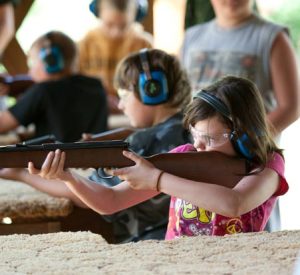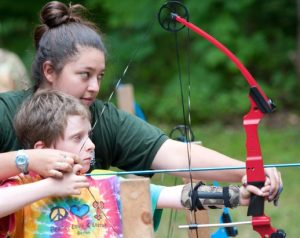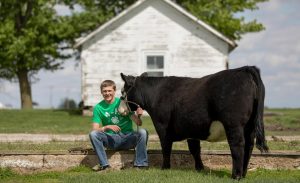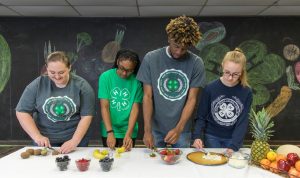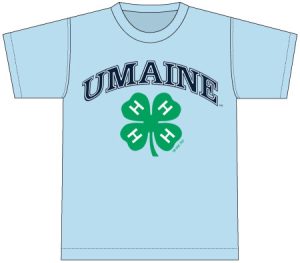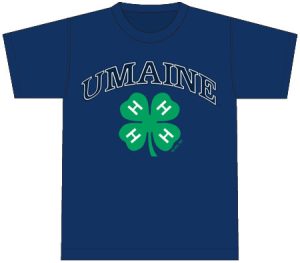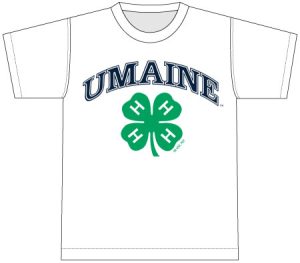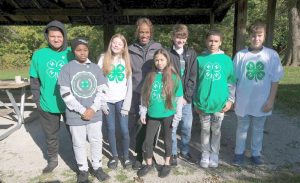4-H Club Leader Handbook
There’s so much to learn about the 4-H program!
As a new volunteer, you might feel a bit overwhelmed with all the information that has been shared with you. The 4-H Club Leader Handbook is a resource designed to help new club leaders get off to a strong start, containing specific information for facilitating the 4-H club model. This resource provides a review of the key components of High-quality Youth Development as well as information about the club model. You will find information about 4-H project records, 4-H opportunities for youth outside of your club meeting time and basic risk management tips.
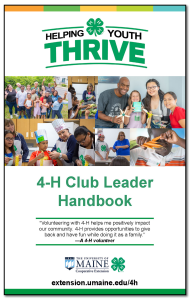
Helping Youth Thrive: 4-H Club Leader Handbook
Welcome to Maine 4-H
What is 4-H?
4- H started more than 100 years ago and is the largest informal youth education program in the United States.
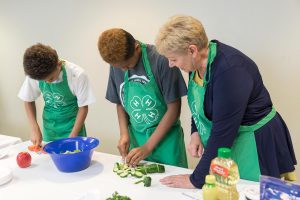
In addition, 4-H reaches beyond the U.S. borders to some 82 countries worldwide. 4-H reaches over 6.5 million youth annually in the United States. 4-H is high-quality youth development; providing opportunities to connect young people with their sparks! The essence of 4-H high-quality youth development programming is to:
- create opportunities that promote youth development and give
youth a sense of belonging - help youth find their spark and support their learning
- nurture developmental relationships between youth and their peers and with caring adults
How is 4-H Connected to the University of Maine?
4-H Youth Development is a branch of Cooperative Extension, which exists at all land-grant institutions in the United States. Our local land-grant institution is the University of Maine. Through Cooperative Extension offices located in counties throughout Maine, university staff bring knowledge and research from the university to the community.
The state 4-H office in Maine is located on the University of Maine campus in Orono. Nationally, 4-H is under the leadership of the United States Department of Agriculture within the National Institute of Food and Agriculture. As a volunteer with 4-H, you are also a volunteer and representative of the University of Maine.
The 4-H Pledge
I pledge…
My head to clearer thinking,
My heart to greater loyalty,
My hands to larger service,
My health to better living
for my club, my community,
my country and my world.
Dedication
This handbook is dedicated to Norma Hardison, Community Education Assistant in Hancock County for 20 years, 4-H volunteer for 40+ years, and 4-H family member for a lifetime. Thank you, Norma, for always keeping 4-H volunteers a priority and reminding us to think about things from their perspective.
Table of Contents:
- Role of the 4-H Club Leader
- Key Components of 4-H Youth Development
- 4-H Youth Development: The Club System
- Use Positive Behavior Management Techniques
- Parent/Guardian Involvement in 4-H
- 4-H Projects and Project Records
- Some Other Things to Consider as a 4-H Club Volunteer
- When to Contact Your County Extension Office
- Opportunities Outside Your 4-H Club
- Appendices
Role of the 4-H Club Leader
Purpose: to ensure high-quality youth development by assisting members in selecting and completing specific 4-H projects of interest. Club leaders serve as a mentor for youth and help keep the club functioning.
Specific Duties:
- Assist youth members in facilitating club meetings or other 4-H programming
- Maintain a safe and open environment for youth to express themselves and learn
- Utilize youth development practices
- Communicate with club members, parents, and 4-H staff regularly
- Complete annual paperwork in a timely manner
- Follow guidelines regarding safe practices, non-discrimination, mandatory reporting, and money handling (fundraising, etc.).
Time Commitment:
 Average of 2-4 hours per month or more depending on the frequency of club meetings and activities. The length of service could be for multiple years.
Average of 2-4 hours per month or more depending on the frequency of club meetings and activities. The length of service could be for multiple years.
4-H Mission:
4-H empowers youth to reach their full potential, working and learning in partnership with caring adults.
4-H Slogan:
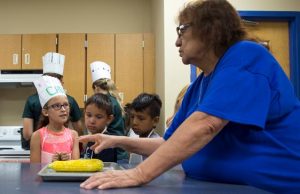 Learn by Doing
Learn by Doing
4-H Motto:
To make the best better
Key Components of High-quality Youth Development
4-H programs provide youth a place to belong, matter, and explore their spark. High-quality settings foster developmental relationships with youth, relationships that express care, challenge growth, and share power. These components help ensure that 4-H programs provide a nourishing developmental context where youth can belong and grow.
The 4-H Model Flower
The flower represents the entire 4-H model. But 4-H volunteers focus on the soil section and the vital points of Sparks, Belonging, Relationships, and Engagement.
Youth who experience high-quality developmental settings in 4-H achieve key positive youth development outcomes, including academic motivation and success, social competence, high personal standards, connection with others, personal responsibility, and contribution to others through leadership and civic engagement. Youth who achieve positive developmental outcomes are more likely to also achieve long-term outcomes marked by vocational or academic success, civic engagement, employability, economic stability, and happiness and well-being.
Volunteers Help Youth Succeed
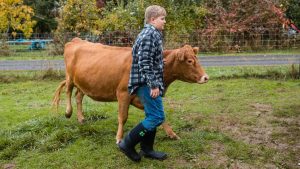 As a 4-H volunteer, you help create a space where youth can explore their sparks, feel a sense of belonging, build relationships with their peers and adults, and engage with their world. This may sound like a huge task, but it is accomplished with small efforts.
As a 4-H volunteer, you help create a space where youth can explore their sparks, feel a sense of belonging, build relationships with their peers and adults, and engage with their world. This may sound like a huge task, but it is accomplished with small efforts.
4-H Youth Development Model Example:
You are a club leader and one of your members, Suzie, loves goats. Your club isn’t specific to goat projects and you don’t know much about goats, but there are many ways you can help Suzie succeed in 4-H:
Belonging
Greet Suzie by name at every meeting/event. Ask about how she is doing and what is going on in her life.
Sparks
Ask Suzie questions about goats. Encourage Suzie to share her knowledge with other club members. Contact your local 4-H staff member to find out if there are any goat-related events that Suzie might be interested in.
Relationship
Cheer on Suzie at a goat show. Be excited for her even when she doesn’t get a blue ribbon. Be a consistent, reliable presence in Suzie’s life (even if that just means hosting consistent club meetings and events).
Engagement
Provide opportunities for Suzie to have a voice and participate in club decision-making processes.
Stages of Experiential Learning
In addition to Positive Youth Development, 4-H stresses the importance of hands-on experiential learning, also referred to as “learn-by-doing.” You can tell or show youth how to do something, but a hands-on experience and talking about those experiences are the best way to reinforce what you want youth to learn.
Do
- Experience: An individual or group activity with a hands-on component.
Reflect
- Share: Group discussion of what was experienced while doing the activity.
- Process: What questions came up as each person or group did the activity?
Apply
- Generalize: Find general trends/common lessons learned. How does the experience apply to the “real world?”
- Apply: Discuss how the new information they learned can be applied to everyday situations or in the future.
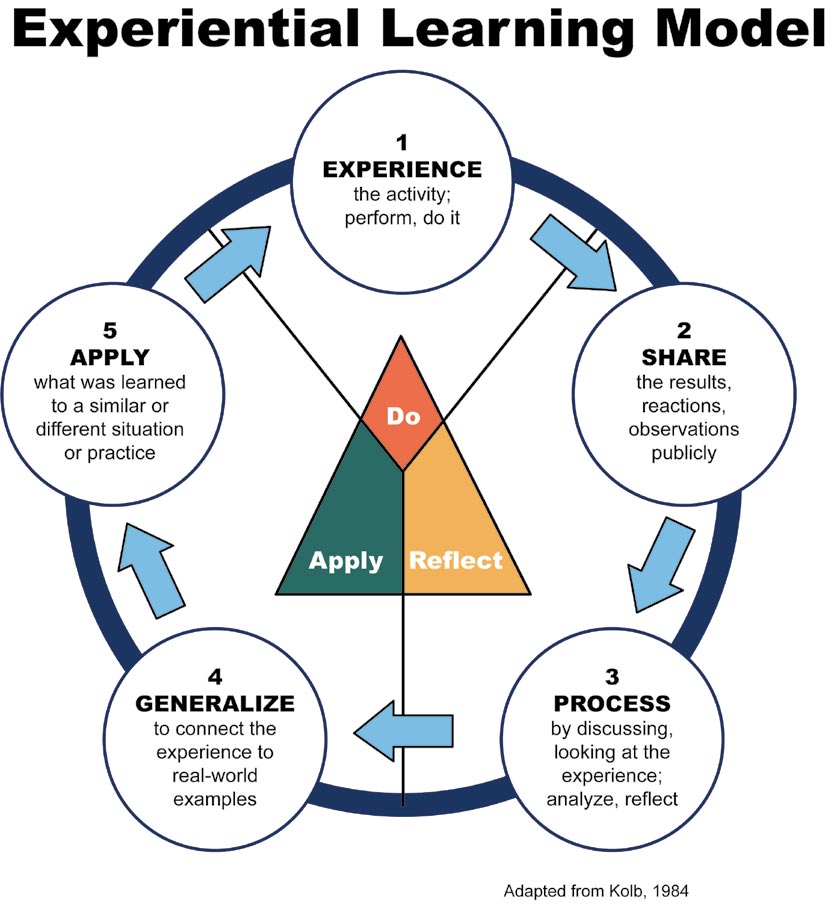
Experiential Learning Example
Do
Experience: Use a sewing machine to make a pillowcase.
Reflect
Share: What were the steps involved?
Examples: measuring, cutting, sewing?
- Did anyone do anything different?
- What was one new thing they learned?
Process: Where did participants have difficulties?
Examples: threading machine, making mistakes and needing to use a seam ripper
- Did anyone find an easier way to complete one of the steps?
- Examples: Any tips or tricks/hacks?
Apply
Generalize: What types of skills did they practice as they sewed their pillowcases?
Examples: planning, measuring, personal safety
- Are there any lessons or skills that they all learned?
- How might knowing how to sew be useful in their everyday life?
Apply: How might they use those skills in activities other than sewing?
Examples: importance of measuring in lots of things (baking, cooking, etc.);
importance of safety procedures in other activities
- What about bigger tasks or jobs?
- Examples: The skills required for sewing a pillowcase can be good practice for bigger projects. If you want to be a builder, accurate measuring and safety are really important!
Youth need to realize the skills they learn doing different activities, such as sewing, have a wider application.
They are not just making a pillowcase.
They are developing skills that will help them with a variety of tasks/experiences/jobs as they get older.
4-H Youth Development: The Club System
What Is a 4-H Club?
 The 4-H club allows youth to develop leadership skills, discover their spark(s), and build relationships with peers and supportive adults. An organized group of at least four youth, from at least three different families, meet a minimum of six times per year with adult volunteers and/or 4-H staff.
The 4-H club allows youth to develop leadership skills, discover their spark(s), and build relationships with peers and supportive adults. An organized group of at least four youth, from at least three different families, meet a minimum of six times per year with adult volunteers and/or 4-H staff.
One of the unique aspects of 4-H is that it is youth-led. With appropriate guidance from volunteers, club members can elect their officers (and run short business meetings), decide on programs, and plan activities. Club time can also be spent working on projects, public speaking, project records, and service projects. Above all, 4-H clubs provide a space for all young people to feel like they belong.
Examples of how youth develop leadership skills in a 4-H club setting
- Decide on a plan of work for the year (with guidance from the club leader)
- Build the agenda for the club meeting
- Lead the pledge of allegiance and the 4-H pledge
- Choose and lead an ice-breaker or team-building activity
- Lead an activity with younger youth
- Lead a brainstorming session to decide on a service project
- Contact and invite a guest speaker and follow up with a thank you note
- Serve on a county 4-H event planning team
- Teach a public speaking workshop and/or mentor other 4-H members in public speaking
- Serve as an officer for the club (president, vice president, treasurer, secretary) or other leadership role as appropriate
- Lead workshops
- Mentor younger members
4-H Year and Enrollment/Re-Enrollment
- The 4-H year runs from October 1 through September 30.
- Membership is open to all youth ages 5-18 (age as of December 31st).
- Annual re-enrollment period is October 1 through December 30.
- First-time enrollment can happen at any time during the year.
- Youth must be re-enrolled by December 31st and new youth must be enrolled by April 1 to participate in animal shows at the upcoming fairs for the year. (Note: Market animals have specific deadlines. Check with your county staff regarding these requirements.)
Three Types of Club Meeting Structure
General Club Meetings
A general club can have youth with a variety of ages and interests. Youth and club leaders work together to plan the agenda for the meeting, taking care to choose topics of interest to all members. The range of activities could include demonstrations, talks, panel discussions, outdoor explorations, videos, slides, guest speakers, and clinics and service projects. The 4-H philosophy is all about ‘learning by doing,’ so try to have as much hands-on and experiential learning as possible.
Project Meetings
These meetings are focused on a particular topic or interest. 4-H members meet with a volunteer to work on a specific project, such as knitting, space science, nature study, or small animals. At this meeting, members learn how to do something related to the project. Sometimes this is set up as a separate meeting time, sometimes it is a portion of the general meeting.
Cloverbuds
Cloverbuds are 4-H youth between the ages of 5-8. While Cloverbuds can be a member of a general 4-H club, it is important to consider developmentally age-appropriate activities and roles and should be:
- fun and positive
- activity-based
- success-oriented
- leader (adult or teen) directed
- noncompetitive
- group-centered
The Cloverbud experience offers activities and topics to help youngsters explore different interests. Cloverbuds are not eligible to show animals competitively at the fair and/or enroll in specific projects until the age of nine. However, there are ways for Cloverbuds to participate in animal-related activities and events like public speaking and receive participation awards. For more information about Cloverbuds, visit the Appendices.
Components of a 4-H Meeting
Business Meeting (10-15 minutes)
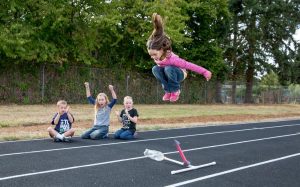 The business portion of the meeting should be short and concise. It is a small democracy in action with members learning how to conduct meetings effectively, work with others through committee assignments, and cooperate with others in making decisions.
The business portion of the meeting should be short and concise. It is a small democracy in action with members learning how to conduct meetings effectively, work with others through committee assignments, and cooperate with others in making decisions.
Educational Programs (30-60 minutes)
This part of the meeting is designed to help members learn more about subjects of interest to the group. The program might include demonstrations, experiential learning activities; a field trip; a community service project; or a guest speaker. Include record keeping in club meetings, by conducting an occasional project record workshop or by setting aside time at meetings to update project records.
Recreation/Social Time (15-30 minutes)
This portion of the meeting distinguishes the 4-H meeting from other educational activities and gives members and volunteers opportunities to develop relationships with each other. Activities may include group challenges, team building, outdoor adventures, ice-breakers, active games, and quiet games and snacks. Get input from youth and help all members be intentional about making sure everyone feels a sense of belonging. Club leaders and members decide how to run their own meetings, there is no one right way for everyone.
Planning the Club Meeting
Effective meetings require planning. Successful clubs get ideas from the members and then work to develop an annual club plan for meeting schedules and educational programs for the club year.
Establish group norms by developing working agreements. Be sure all youth have input. Asking youth to sign the working agreement can help hold group members accountable. Usually, with older youth, club officers do the initial program planning with guidance from club volunteers and club parents. This plan is then presented to the entire club for review, modification, and approval.
The officers elected at the beginning of the 4-H year are responsible for conducting meetings. The club volunteer(s) work with officers to help them develop leadership skills and assist in developing agendas.
If you choose to have a business portion of the meeting, one method that can be utilized is called parliamentary procedure. This is a method of progressing through the items on a meeting agenda to maintain democratic rule, fairness, and the opportunity for debate to reach a consensus on group decisions. Whatever format you choose, it is important to have youth lead, and actively make decisions. Additional resources on parliamentary procedures are on Iowa State’s website: Conducting a 4-H Business Meeting (PDF).
- Suggested 4-H Club Meeting Agenda
- Call to Order
- Pledge of Allegiance
- 4-H Pledge
- Roll Call/Ice Breaker/Introduction of New Members
- Short Business Meeting (follow, model, and use parliamentary procedure)
- Educational Activity
- Recreation/Social Time
A 4-H meeting plan template can be found in the Appendices.
First and Second 4-H Meeting
One of the most important things to do at the first meeting is to begin to build a sense of belonging where youth will feel welcome and want to return. You can think of this first meeting as an orientation to 4-H, taking time to explain things, but also get input from the youth and engage in a fun activity. Everyone should leave these meetings feeling that they had a good time, were heard, contributed to discussions, and know what will happen next. You may want to arrange for a 4-H staff person, experienced 4-H volunteer, or 4-H teen to attend your initial meeting to help you get off to a great start.
- Utilize ice-breakers to help youth learn more about one another
- Select a club name
- Learn the 4-H Pledge and Motto
- Develop working agreements for the group
- Talk about the responsibilities of club officers
- Engage in a fun activity (can be related to the project if a club is project-specific)
Second 4-H Meeting Ideas
- Continue to focus on building a sense of belonging with group members.
- Begin to practice a meeting structure so youth become familiar with expectations.
- Conduct elections (for groups with older youth)
- Work with club officers conduct the club’s first business meeting. Begin to teach basic parliamentary procedures as the meeting progresses.
- Brainstorm and begin to put together a plan for the year. Ensure all youth have an opportunity to provide input.
- Include a short hands-on activity to encourage youth engagement and fun.
 You are not in this alone – feel free to call your county 4-H staff person for support with your first meeting, questions about your second meeting, or ideas for meetings to follow. There is no one right way to conduct meetings. Work together with youth and other adults in your group to find a model that works, and is welcoming and engaging. We are always happy to help you get off on the right foot as you start your 4-H volunteer journey!
You are not in this alone – feel free to call your county 4-H staff person for support with your first meeting, questions about your second meeting, or ideas for meetings to follow. There is no one right way to conduct meetings. Work together with youth and other adults in your group to find a model that works, and is welcoming and engaging. We are always happy to help you get off on the right foot as you start your 4-H volunteer journey!
A 4-H meeting plan template can be found in the Appendices.
Use Positive Behavior Management Techniques
Behavior management, whether exercised by youth themselves or by adult volunteers, starts with a shared understanding of behavioral expectations. Some expectations, regarding health and safety and group values, are nonnegotiable, but in other matters, youth should have an active role in defining limits and establishing club rules. Here are some tips.
- Use the “4-H Member’s Code of Conduct” (see Appendix for a copy) to clarify and enforce the non-negotiable expectations.
- Discuss ways members can make additional rules. Connect discussion of club rules to the code of conduct. Suggestions should be presented as motions and voted upon at the next business meeting. Let members know that they can always discuss rules they feel should be changed or added. Using a suggestion box might be helpful for members who seldom speak up at meetings.
- Eliminate temptation. When members are busy and having fun, they are not looking for ways to “get in trouble.” So plan ahead to eliminate “downtime.”
- Do more listening than talking. When an individual is acting out or there is a conflict between members, those involved are in a heightened emotional state; they can’t “hear” what you say. Follow these steps:
- Separate the member(s) from the group.
- Calm the situation by speaking softly.
- Find out what happened but emphasize discovering why it happened.
- Create a sense of responsibility without placing blame.
- Help member(s) recognize the potential consequences of the action. Try to use questions -“What would happen if…” – to lead the thought process.
- Help member(s) decide how to handle a similar situation in the future. Again, guide the thought process without prescribing the solution.
- Consult with parents if behavior problems persist. Use tact and sensitivity when talking with parents about their children. Here are some suggestions:
- Don’t inform the member(s) that you intend to talk to the parents – it may be taken as a threat.
- Do request the parent’s assistance – “I hope you can help me solve a problem I’ve been having during 4-H meetings.”
- Do present the facts, but don’t use labels (troublemaker) to describe the child’s behavior.
- Do explain the behavior management techniques you have tried and the child’s response.
- Don’t tell the parents what they should do, but do ask if there is anything they can do to help and if they have any suggestions for you.
Parent/Guardian Involvement in 4-H
 4- H is a family program. Parents/guardians are encouraged to attend club meetings and 4-H events with their child as a great way to learn and grow together. Parents/guardians are your number one resource for help with your club. Remember to:
4- H is a family program. Parents/guardians are encouraged to attend club meetings and 4-H events with their child as a great way to learn and grow together. Parents/guardians are your number one resource for help with your club. Remember to:
- Keep parents/guardians informed. Help them understand the 4-H objectives. Send notes, text messages, or emails directly to parents/guardians about the club program. Allow time for discussion before or after meetings with parents.
- Support new families. For new members and parents/guardians, you might want to have a separate meeting to help them understand the 4-H program, the club’s activities, and club membership expectations.
- Invite parents/guardians to a club meeting. Find ways to help create a sense of belonging for both the youth and adults.
- Appreciate parents/guardians. Thank them for their support and contributions to the club program both personally and in public.
- Encourage parents/guardians to help in ways that make sense for them.
- Try sharing the checklist for ‘The Interested 4- H Parent/Guardian’ found in the Appendices.
4-H Projects and Project Records
What Is a 4-H project?
Each year, 4-H members ages 9 and up can choose projects to focus on. The purpose of the 4-H projects is to allow 4-Hers to find and develop their interests, or sparks. Members can choose a new topic that they want to learn more about or choose the same project year after year to develop skills and deepen their knowledge of a particular topic. Project topics are wide-ranging, from animal sciences and geology to arts and crafts and sewing. Cloverbud members (ages 5-8) choose from the “Intro to 4-H Projects.”
Youth are encouraged to explore their project(s) throughout the 4-H year. They can do this through participation in a 4-H club, attending 4-H workshops, and learning independently. Club leaders and 4-H staff are always happy to help 4-Hers find opportunities to pursue their spark.
Understanding the “WHY?”
Behind 4-H Project Records The Purpose of 4-H project records is to document not just what youth have experienced, but how youth will take what they have learned and grow; as a person, as a leader, and as a Maine 4-H member. Co-designed with Maine 4-H volunteers, youth, and staff; the 4-H project records have been designed to best serve the needs of Maine youth. They align critical life skills with workforce and college and career readiness within the Positive Youth Development framework of the 4-H model.
4-H members are encouraged to keep records as part of their leadership experience. A 4-H record presents a picture of the individual growth and development of a 4-H member. All Maine 4-H members ages 9-18 are encouraged to complete a 4-H project record annually. Cloverbud members (5-8) should practice their record-keeping skills in partnership with an older 4-H member or an adult partner/caregiver. A project record is encouraged for many reasons, but it is not required to be a part of a club or project area. The optional project record forms will prepare youth with the documentation needed for applying for scholarships, national trips, and possibly a job or college application.
How Do Youth Select a 4-H Project?
In most cases, club members and leaders work together to decide which projects they want to complete during the year. Members work on their projects together at club meetings. A club leader, parent volunteer, or youth leader of the club will facilitate a project’s activities and learning opportunities.
Occasionally a member will want to explore a project in which the leader is not proficient, or other club members are not interested in pursuing. If this is the case, youth are welcome to work on projects outside of their club meetings. They may seek guidance from their parents, other members of the 4-H community, community organizations, or other experts in the field to assist them in acquiring these new skills.
How Many 4-H Projects Can a Child Select?
There is no limit to the number of projects a child can select. While we don’t want to limit the number of topics youth want to pursue, it is recommended that club leaders assist youth in thinking about selection and balance when choosing project areas. Leaders and parents should help guide members in setting realistic but challenging goals. It is always better to complete fewer projects that reflect high-quality work than to complete multiple projects of low quality.
For more information about 4-H project records, templates, and samples, visit the Maine 4-H website’s Project Records page.
Sample Maine 4-H Project Record
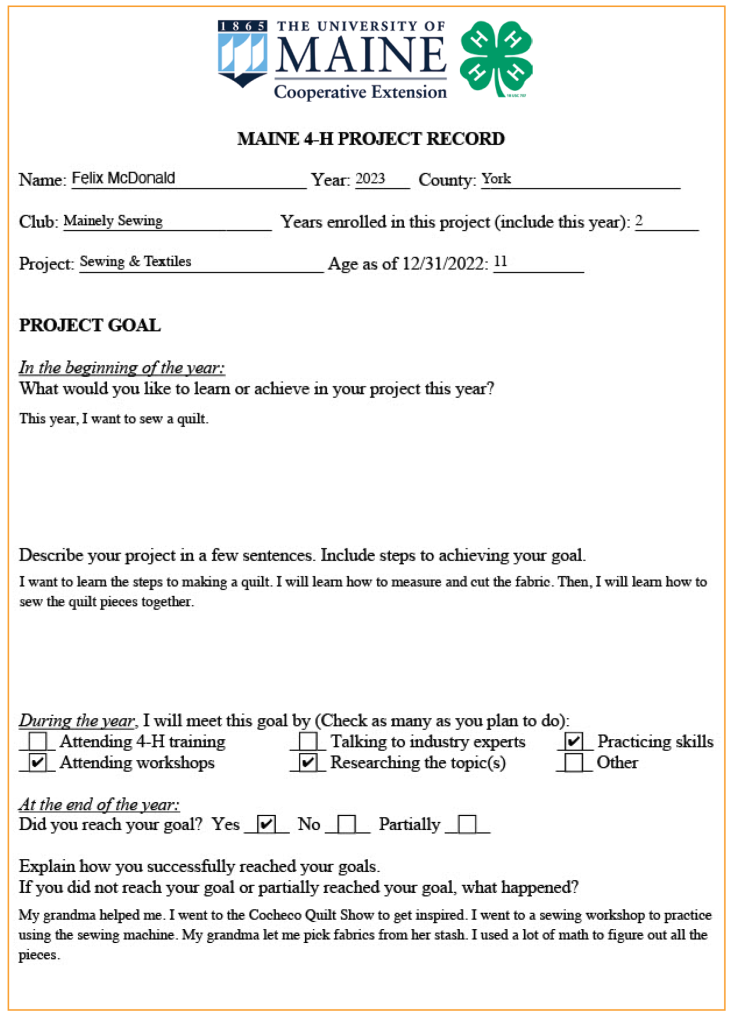
Some Other Things to Consider as a 4-H Club Volunteer
Club Charter
The Club Charter identifies a group as an organized 4-H club that is authorized to use the 4-H name and emblem for educational purposes. The Charter stays with the club as long as it is in existence. All chartered clubs are expected to operate within the framework of the 4-H program. The charter does not have to be renewed when leaders change or minor revisions are made to the club structure. A charter application should be submitted soon after the club has elected its officers and met the other eligibility requirements. Charter requirements and application process can be found in the B.1.13.a 4-H Club Charter Requirements section on Extension’s Additional Volunteer Policies B.1 page.
Financials and Fundraising
Before starting any fundraising efforts with your 4-H club, meet with your county 4-H staff contact to be sure you understand all policies and procedures, including how to get a tax identification number (EIN). When fundraising for a 4-H club, or under the 4-H umbrella for any reason, clubs and leaders must be conscious of upholding the good name of 4-H. You must get approval in advance for the activity from the county 4-H contact person, and use all funds for 4-H purposes. In a club setting, a youth should serve as the treasurer and work closely with an adult (from a different family unit) to learn and apply best practices in money handling. Keep good records and be very open about any fundraising activities.
When it comes to 4-H club funds, you will want to be familiar with, and follow the 4-H Financial Guidelines (section B.2.3 of the Maine 4-H Policy Manual) on the Additional Volunteer Guidelines B.2 page of the Maine 4-H website or visit the Appendices for a copy of the guidelines.
Risk Management
4- H volunteers are an essential partner in our youth development program, and UMaine Extension is committed to ensuring the safety of volunteer leaders and members as much as possible. Our risk management policies and procedures are designed to guide 4-H leaders on ways to reduce risks involved in working with youth, and the risk of harm to 4-H members. There is an expectation that volunteers will be ready to take proactive measures in minimizing or reducing potential risks for programs, events, and activities sponsored by UMaine Extension. For example, some key best practices include:
- the two-deep policy (never put yourself or any adult in a position of being alone with a youth, have at least another adult or teen present)
- do not arrange carpooling, let parents/guardians take responsibility for that
- always contact the county Extension office when planning a field trip or adventure to get approval and review the risk management checklist to help you consider and plan for potential risks
More Risk Management
Sections A.1.5 and B.1.7 of Maine 4-H’s 4-H Policies and Procedures Guidelines page is a good resource for reviewing low-risk management practices. You will find information on many topics including volunteers and liability; liability associated with vehicle use and reporting an accident; working with animals; guidelines for volunteers acting as chaperones; how to report suspected child abuse and/or neglect; crisis communication; event and program guidelines; and financial management.
For more information about volunteer liability, download and review the Volunteers and Insurance Brochure (PDF) — or ask for the UMaine Extension Volunteers and Insurance brochure at your local county Extension office.
When to Contact Your County Extension Office
Your county Extension office and 4-H staff are here to support you in your role as a 4-H volunteer. The local Extension office has a wealth of resources and information. If you have questions, don’t be afraid to contact them via phone or email. There are also certain times when you are required to contact your county office:
Field Trips/Attending Events as a 4-H Club
 If you will be meeting somewhere other than your regularly established meeting location, or attending an event, or taking a field trip with your 4-H group, you must notify the office prior to your field trip or event. All 4-H activities/events/field trips must be approved by your 4-H staff contact in order for you to be covered by liability insurance as a 4-H volunteer. Communicating with your staff contact will also give you the opportunity to discuss and risk management considerations.
If you will be meeting somewhere other than your regularly established meeting location, or attending an event, or taking a field trip with your 4-H group, you must notify the office prior to your field trip or event. All 4-H activities/events/field trips must be approved by your 4-H staff contact in order for you to be covered by liability insurance as a 4-H volunteer. Communicating with your staff contact will also give you the opportunity to discuss and risk management considerations.
Fundraisers
![]() If your club is planning a fundraiser or planning to ask local businesses for donations, you must first talk with the Extension office. This helps to ensure we don’t have multiple fundraisers at the same time in the same location, and that the fundraising efforts are for legitimate purposes. It keeps local businesses from being tapped again and again by our organization and ensures you are being respectful of University of Maine donors too.
If your club is planning a fundraiser or planning to ask local businesses for donations, you must first talk with the Extension office. This helps to ensure we don’t have multiple fundraisers at the same time in the same location, and that the fundraising efforts are for legitimate purposes. It keeps local businesses from being tapped again and again by our organization and ensures you are being respectful of University of Maine donors too.
Accident
 If an accident happens involving a club member or volunteer, you are required to contact the office. County office staff can help you fill out the necessary paperwork to document the accident.
If an accident happens involving a club member or volunteer, you are required to contact the office. County office staff can help you fill out the necessary paperwork to document the accident.
Interested New Volunteers and New Families
 Welcome them and take the time to answer their questions. Please ask them to contact their local county Extension office for enrollment information. Sending a new person to ZSuite is not the appropriate first step and may cause delays and frustration for the person/family wanting to join.
Welcome them and take the time to answer their questions. Please ask them to contact their local county Extension office for enrollment information. Sending a new person to ZSuite is not the appropriate first step and may cause delays and frustration for the person/family wanting to join.
Opportunities Outside Your Club
Scholarships for 4-H Members
 The Maine 4-H Foundation provides generous support to the 4-H program each year. This includes a variety of scholarships to graduating 4-H members to be used for secondary education purposes. Applications for these scholarships become available each January. As a 4-H club volunteer, if you work with teens, you may wish to familiarize yourself with the application process so you can encourage teens to apply. You may even be asked by a 4-H youth to write a letter of recommendation. Scholarship opportunities can be found on the Maine 4-H Foundation website’s Receive Funding page.
The Maine 4-H Foundation provides generous support to the 4-H program each year. This includes a variety of scholarships to graduating 4-H members to be used for secondary education purposes. Applications for these scholarships become available each January. As a 4-H club volunteer, if you work with teens, you may wish to familiarize yourself with the application process so you can encourage teens to apply. You may even be asked by a 4-H youth to write a letter of recommendation. Scholarship opportunities can be found on the Maine 4-H Foundation website’s Receive Funding page.
Check with your county 4-H staff as some counties have additional scholarships available.
Regional and National 4-H Trips and Experiences
4-H offers amazing opportunities for youth to move beyond their communities and state to participate in regional and national events and conferences. National 4-H trips are excellent opportunities to meet 4-H members from across the nation. Participants learn about many career options, learn through educational workshops, and practice their leadership skills. Some of the national trips include:
Citizenship Washington Focus (CWF)
Washington, D.C. each June. Applications are due in the spring. This 4-H leadership program is for youth ages 14-18, from across the country. During this seven-day intensive summer citizenship program, CWF delegates learn about the democratic process and their role as citizens while they experience our nation’s capital.
National 4-H Conference
Washington, D.C. each April. The overall purpose of this experience is to provide an opportunity for youth, adult volunteer leaders, and Extension staff to work together in addressing the issues of youth and determine how the 4-H Youth Development program can best meet the needs of youth at the local, state and national levels through educational programming. The Maine 4-H Program sends four delegates annually using a competitive process that includes records of their 4-H and community involvement and candidate interviews.
National 4-H Congress
Atlanta, GA each November. Congress provides youth ages 14-18 a quality, educational, and cross-cultural experience that exceeds what any state independently provides. It is designed to address the needs and issues of young people while helping to develop capable, competent, and caring citizens. More than 1,000 youth from small towns, suburbs, farming communities, and cities will come together for five days of discussion groups and workshops. Maine selects and sends four participants annually based on records of their 4-H and community involvement and candidate interviews.
True Leaders in Equity Challenge
Washington, D.C. each June/July. Youth have the opportunity to engage in being a global citizen by exploring and expressing what equity means to them through performing arts—presentation, music, dance, theater, etc. The challenge is open to any youth (ages 5-19) who is part of 4-H or any school/youth organization that partners with 4-H.
True Leaders in Equity Institute
The True Leaders in Equity Institute is a training program for passionate youth ages 14-19 to learn about equity and inclusion and how it affects their communities. The institute will prepare participants to be change agents within the UMaine Extension System as we work together to create more welcoming and inclusive environments.
Eastern States Exposition (ESE or the “Big E”)
West Springfield, MA end of Sept into the first week of October. Maine 4-H sends competitive teams to this regional agricultural fair in the following categories: horse, sheep, goat, dog, beef, dairy, dog, and communication science. 4-H members are required to submit “Intent to Participate” forms and attend workshops and tryouts to be considered for the teams.
Ignite Conference
Washington, D.C. each March. It is a teen event offering four days of inspiring speakers, workshop ses-sions, activities, and entertainment. The summit provides high-school-aged youth from across the country the opportunity to explore the best 4-H has to offer in STEM, Agriscience, and Healthy Living.
Any Maine 4-H Youth, ages 14 to 18, is eligible to apply for any of the events listed above. Applicants must be current Maine 4-H members both at the time of application and the time of the actual trip. To learn more about these trips, visit Maine 4-H’s National 4-H Trips page.
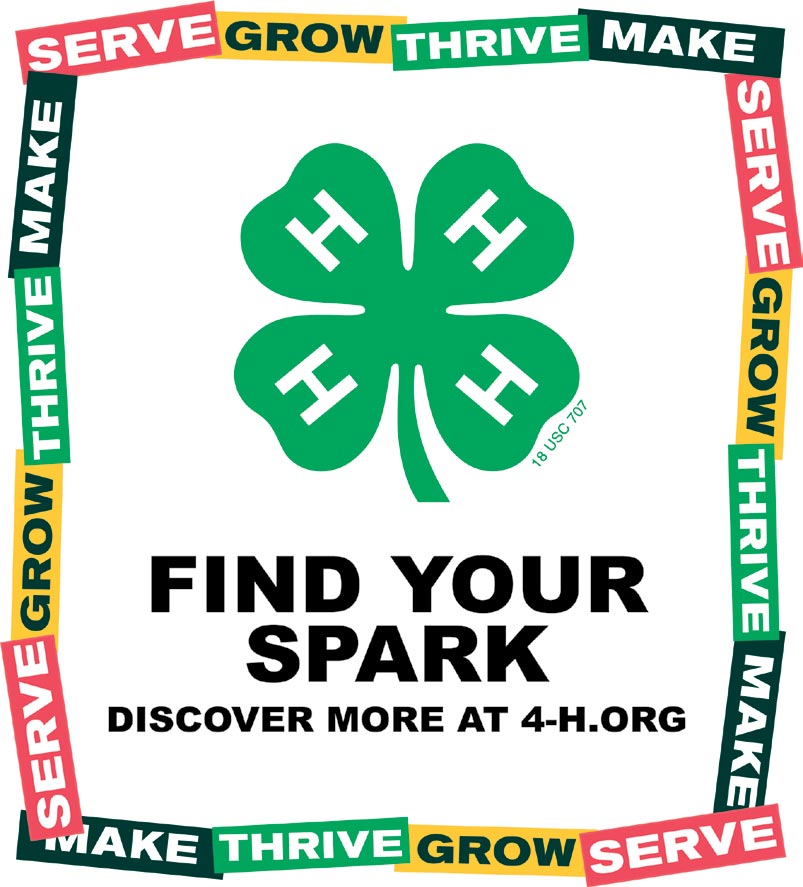
Appendices
In the appendix, you will find links to websites with additional information as well as forms/templates you may find helpful. Please reach out to your local county office if you have additional questions.
Web Links
- Maine 4-H Forms
- 4-H National Headquarters Fact Sheet Learning Styles, NIFA/USDA (PDF)
- Policies, Procedures, and Guidelines Table of Contents
- Additional Volunteer Policies B.1 – Risk Management Checklist for Event Planning
- 4-H National Headquarters Fact Sheet Inclusive and Diverse Learning Experiences, NIFA/USDA (PDF)
- Maine 4-H Low-Risk Program Management Practices
Cloverbud FAQs
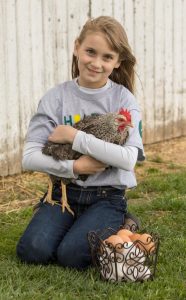 What is the difference between a Cloverbud and other 4-H members? Children in this age group have developmental and learning characteristics that are different from older members. If you have spent time with kids that are 5-8 years old, you have seen that their attention span is shorter, they are physically smaller and they may handle competitive events in a different way than older, more experienced youth.
What is the difference between a Cloverbud and other 4-H members? Children in this age group have developmental and learning characteristics that are different from older members. If you have spent time with kids that are 5-8 years old, you have seen that their attention span is shorter, they are physically smaller and they may handle competitive events in a different way than older, more experienced youth.
In Maine, Cloverbuds participate in 4-H activities but are limited to non-competitive activities and cannot exhibit larger animals in any fairs or events.
What if a Cloverbud wants to take a specific project like cooking or dogs?
Programs for Cloverbuds should consist of introductory level (“sampler”) activities that build skills in a variety of 4-H project areas.
A Cloverbud activity focuses on developing a skill or concept related to a short-term experience. 4-H project work, a long-term planned course of study in one subject area, is designed for 4-H members ages nine and older. The skills Cloverbuds learn from their activities will prepare them for project work later.
Do Cloverbuds keep records?
Cloverbuds should have the opportunity to be introduced to simple record-keeping skills using an age-appropriate method such as the Maine 4-H Cloverbuds Activity Record.
Can a Cloverbud work with animals?
The national 4-H policy states that for safety and developmental reasons, children ages 5-8 may not have animal projects. Cloverbuds may not show any animals competitively in 4-H classes at Maine fairs or other 4-H events.
Recognizing that engaging this age group in activities with animals builds long-term interest in working with animals, carefully structured, well-supervised, age-appropriate activities with animals are encouraged.
Can Cloverbuds show at 4-H fair events?
While Cloverbuds may not participate as competitive exhibitors in any 4-H events, they are encouraged to participate in fairs and other county events in other ways, and be recognized for their participation.
Your First Project Meeting
- Help members get to know you and each other.
- Help members know what the project is all about.
- Review project materials. Discuss ideas for things to do in the project at meetings and at home. Use project material, your ideas, member ideas, and parent ideas.
- List ideas for project meetings and involve members in choosing from the list. For younger members, list fewer options. Decide on a year’s plan.
- Help members know the kinds of help you will give them at meetings, by phone, or at home (your home or their home).
- Help members think of things to do and learn that are realistic for their age and circumstance.
- Help members set realistic goals for doing and learning.
- Include a short project-related activity that involves members in doing (and/or demonstration by you or the teen leader).
- Help members understand how teen leaders will help with project work.
- Provide time for reflection to bring closure to the meeting. Discuss things members can do at home before the next meeting.
- Remind members of the time, place, and things to bring to the next meeting.
- Say goodbye and thank the members for coming! Members are more likely to return if they feel a sense of belonging.
Suggested 4-H Meeting Planner
Date ________________________________________ Time ________________________________________
Location _____________________________________ Topic ________________________________________
| Activity | Who Is Responsible for Planning It? | Who Is Responsible for Leading It? | Notes |
| Activity for Early Arrivals | |||
| Call to Order | |||
| Pledge of Allegiance/4-H Pledge | |||
| Roll Call/Ice Breaker | |||
| Business Meeting (if applicable) | |||
| Project Activity | |||
| Recreation/Team Building | |||
| Refreshments | |||
| Reflection |
Sure, I’d Like to Help!
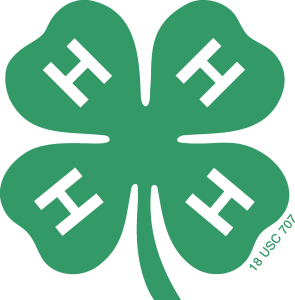 Parent and guardian interest and participation help the leader’s job be more rewarding and the workload much easier. Leaders can kindle the 4-H fire, but family encouragement makes it burn brightly. Please check the activities you are willing to help with or willing to do:
Parent and guardian interest and participation help the leader’s job be more rewarding and the workload much easier. Leaders can kindle the 4-H fire, but family encouragement makes it burn brightly. Please check the activities you are willing to help with or willing to do:
___ Open home for an occasional meeting
___ Provide light refreshments (your child serves them; a committee helps with cleanup)
___ Share a special interest or hobby with 4-H (please list)
_________________________________________________________________________________________________________
___ Assist with 4-H projects or activities (please list)
_________________________________________________________________________________________________________
___ Help with transportation to 4-H meetings or events
___ Assist with fundraisers
___ Assist with Service Projects
___ Assist with Program planning
___ Assist with public speaking and demonstrations
___ Field trips/tours
___ Camping & outdoor activities
___ Fairs (preparation, exhibit hall, food booth, raffle tickets, judging)
___ Project leader (lead a series of sessions on a particular project/topic area)
________________________________________________________________________________________________ Project
___ Other (please list):
_________________________________________________________________________________________________________
Name _________________________________________________________________________________________________________
Address _______________________________________________________________________________________________________
Town ___________________________________________________ Zip ____________________________________
Phone ____________________________________ Email ______________________________________________________________
4-H Member’s name ___________________________________________________________________________________________
The child’s success and growth as a 4-H’er largely depends on family encouragement and involvement. Please join us! Thank you!
Leaders can photocopy this form to hand out to interested Parents and Guardians.
4-H Program Participation Permission, Agreements, and Photo Release Form
Name of 4-H Activity ___________________________________________________ Date(s) ____________________________________
Participant: Please read this form carefully, provide all requested information, and sign and date the bottom of this page.
Name (last, first, middle initial)
Mailing Address: __________________________________________________________________________________________
Town, State, Zip: __________________________________________________________________________________________
Telephone: ____________________________ County ___________________________
Birth Date ____________________ Gender _____________________
Roommate preference (if applicable to this event) ___________________________
As a participant in this program, I understand that I represent myself, my family; my county; Maine; and all Maine 4-H participants, volunteers, and staff. By my actions, will 4-H be judged. Therefore, by my signature below, I agree to:
- Participate fully in this program.
- Follow all scheduled times including curfew and wake-up hours; to be where assigned, when assigned.
- Follow the Dress code established for this program/event.
- Uphold the highest standards of behavior, manners and language.
- Refrain from using alcoholic beverages, non-prescribed or illegal drugs, tobacco products, or fireworks.
- Respect the rights of others at all times and make every attempt to include all participants in all activities.
- Leave the facilities in the same condition or better than I found them when I arrived.
- Support and follow all leadership and direction received from coordinators, chaperones and any other adult authority.
- Respect the personal space and property of others in all settings including during overnight programs.
- Seek assistance and support from adult chaperones on behalf of myself or others should a situation arise that warrants adult intervention or makes me feel uncomfortable.
I understand that if I break this agreement, I must accept the consequences of my actions, which might include a loss of privileges during this program, loss of 4-H privileges in the future, and/or immediate dismissal from this program as determined by county and/or state 4-H staff.
Signature _________________________________________________________________________ Date _____________________________
Parental Statement – Please sign and date
My daughter/son/ward has my permission to attend this program. I have read and understand the statements they have agreed to above and support this agreement. I realize that I am personally responsible for my daughter/son/ward while they are attending this program. I understand and expect that should my daughter/son/ward break this agreement and the adult coordinators find it necessary to dismiss them from this program, that I am responsible for their transportation home.
Signature _________________________________________________________________________ Date _____________________________
– Rev. June 2018
In complying with the letter and spirit of applicable laws and pursuing its own goals of diversity, the University of Maine System does not discriminate on the grounds of race, color, religion, sex, sexual orientation, transgender status, gender, gender identity or expression, ethnicity, national origin, citizenship status, familial status, ancestry, age, disability physical or mental, genetic information, or veterans or military status in employment, education, and all other programs and activities. The University provides reasonable accommodations to qualified individuals with disabilities upon request. The following person has been designated to handle inquiries regarding non-discrimination policies: Director of Equal Opportunity, 5713 Chadbourne Hall, Room 412, University of Maine, Orono, ME 04469-5713, 207.581.1226, TTY 711 (Maine Relay System).

